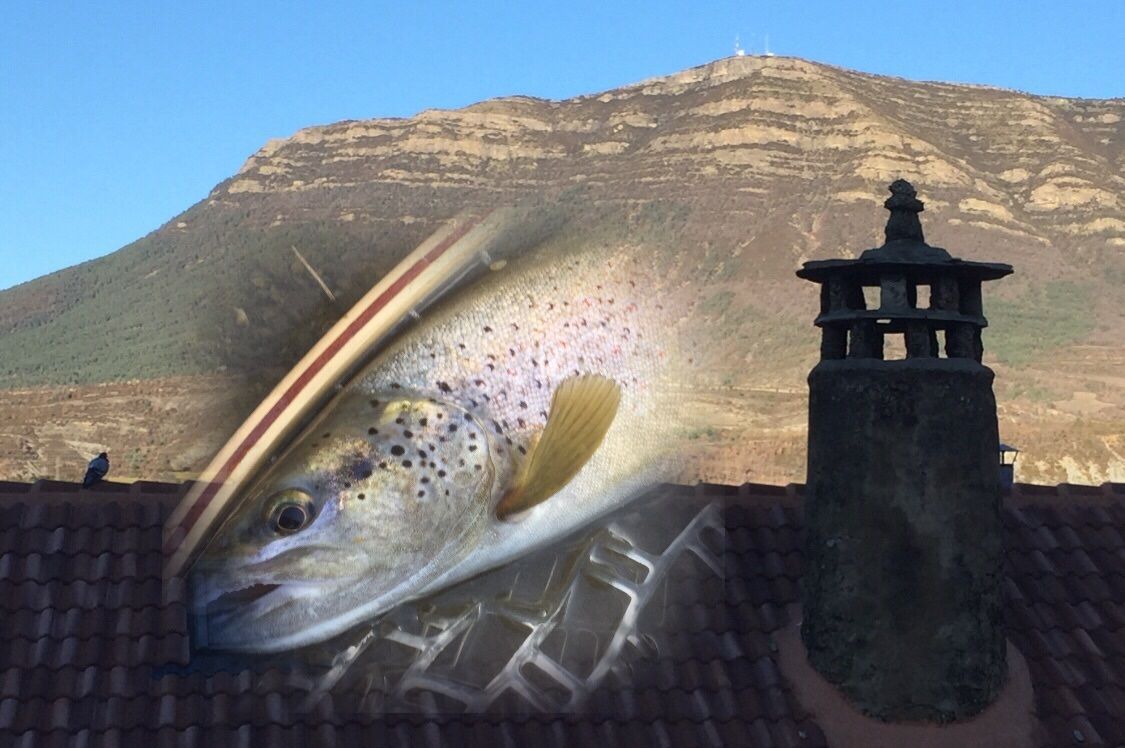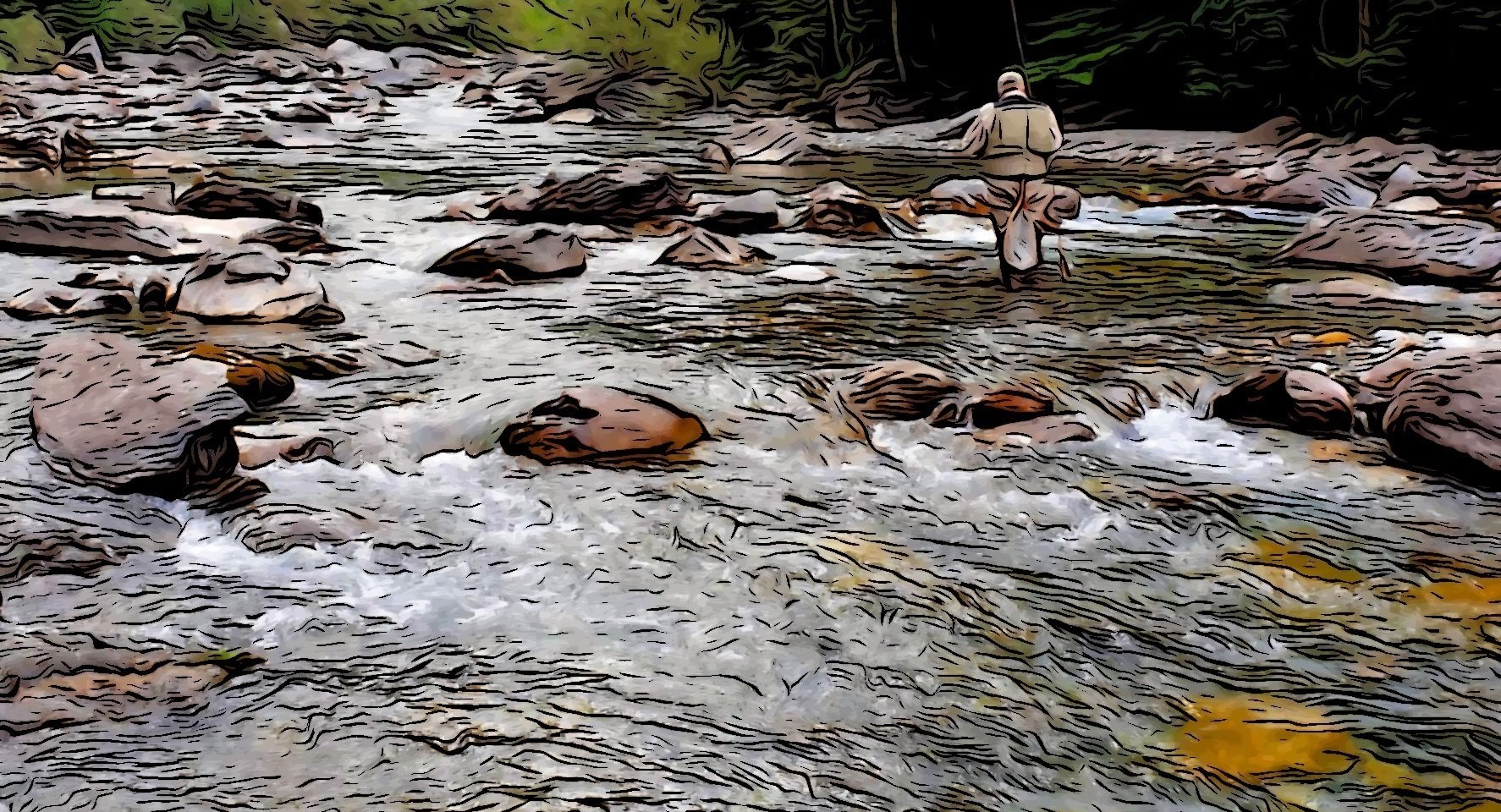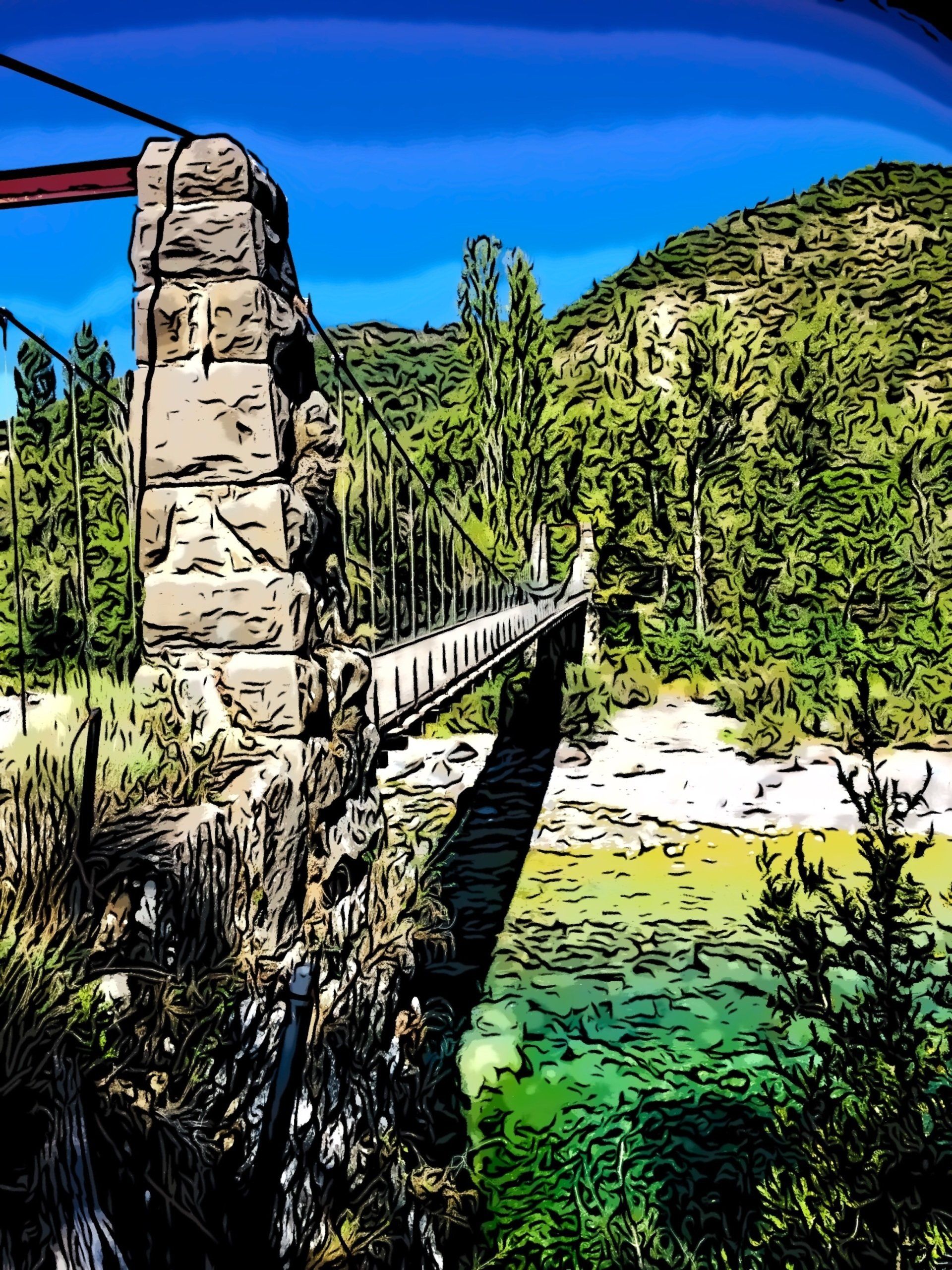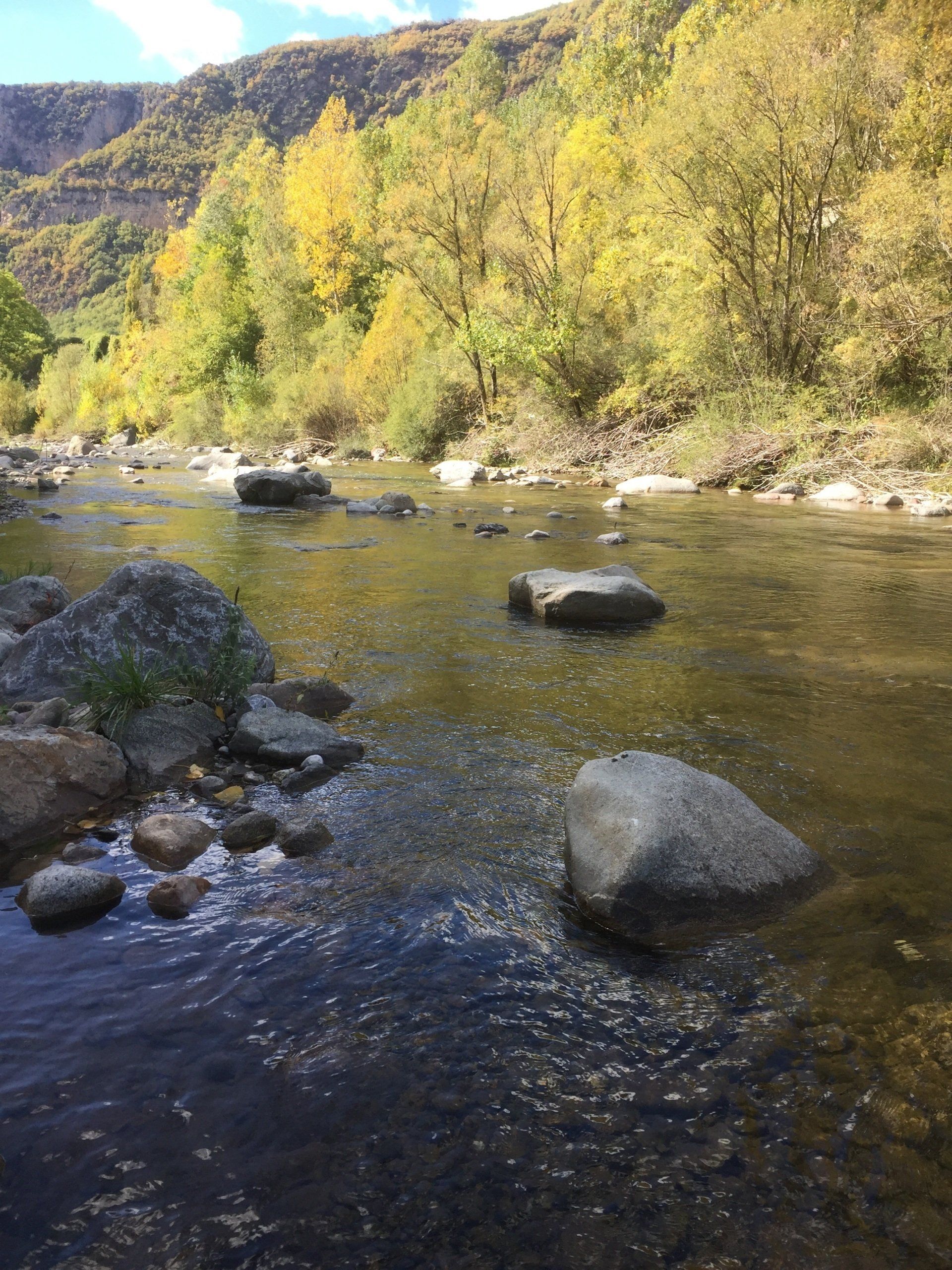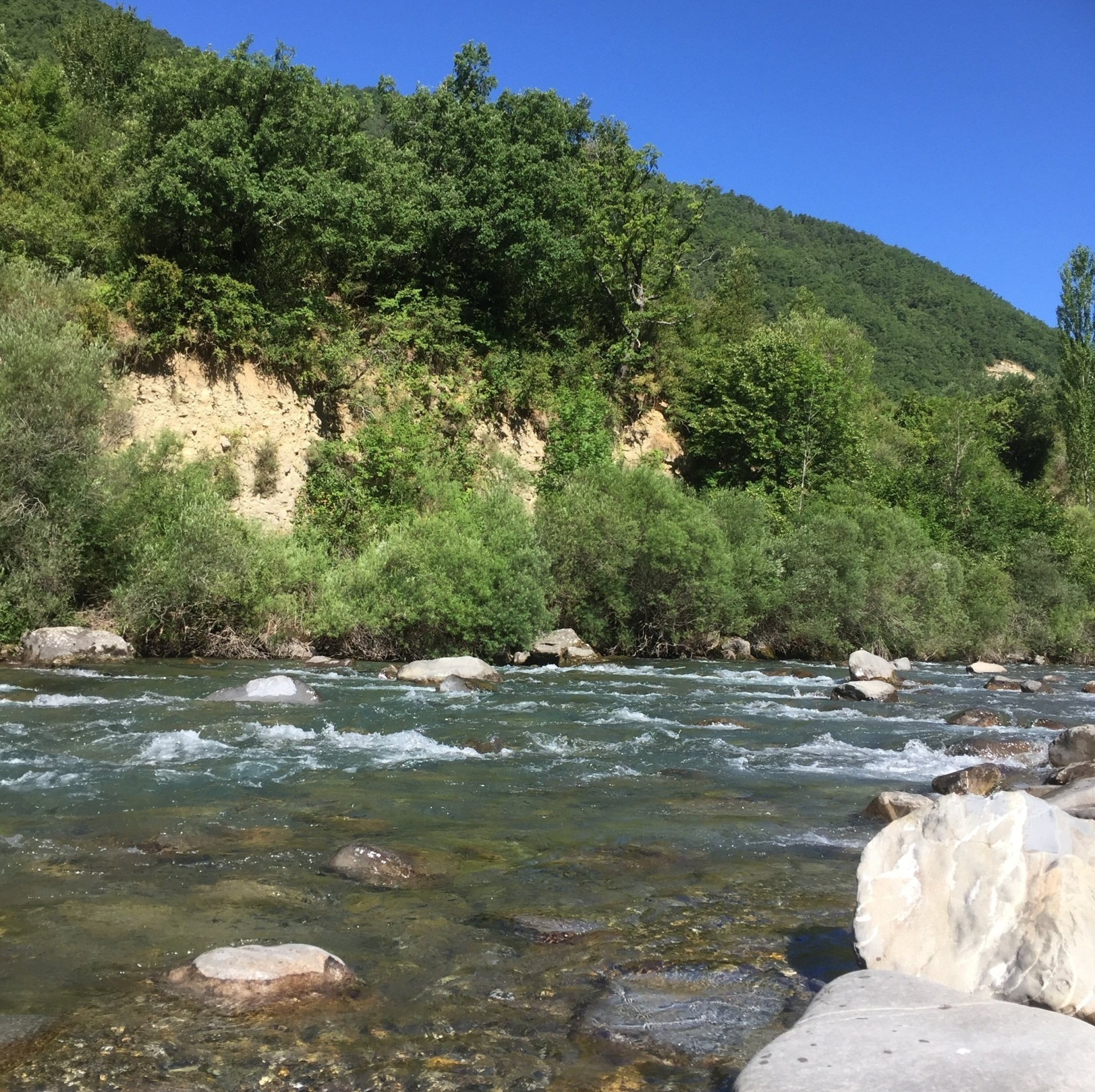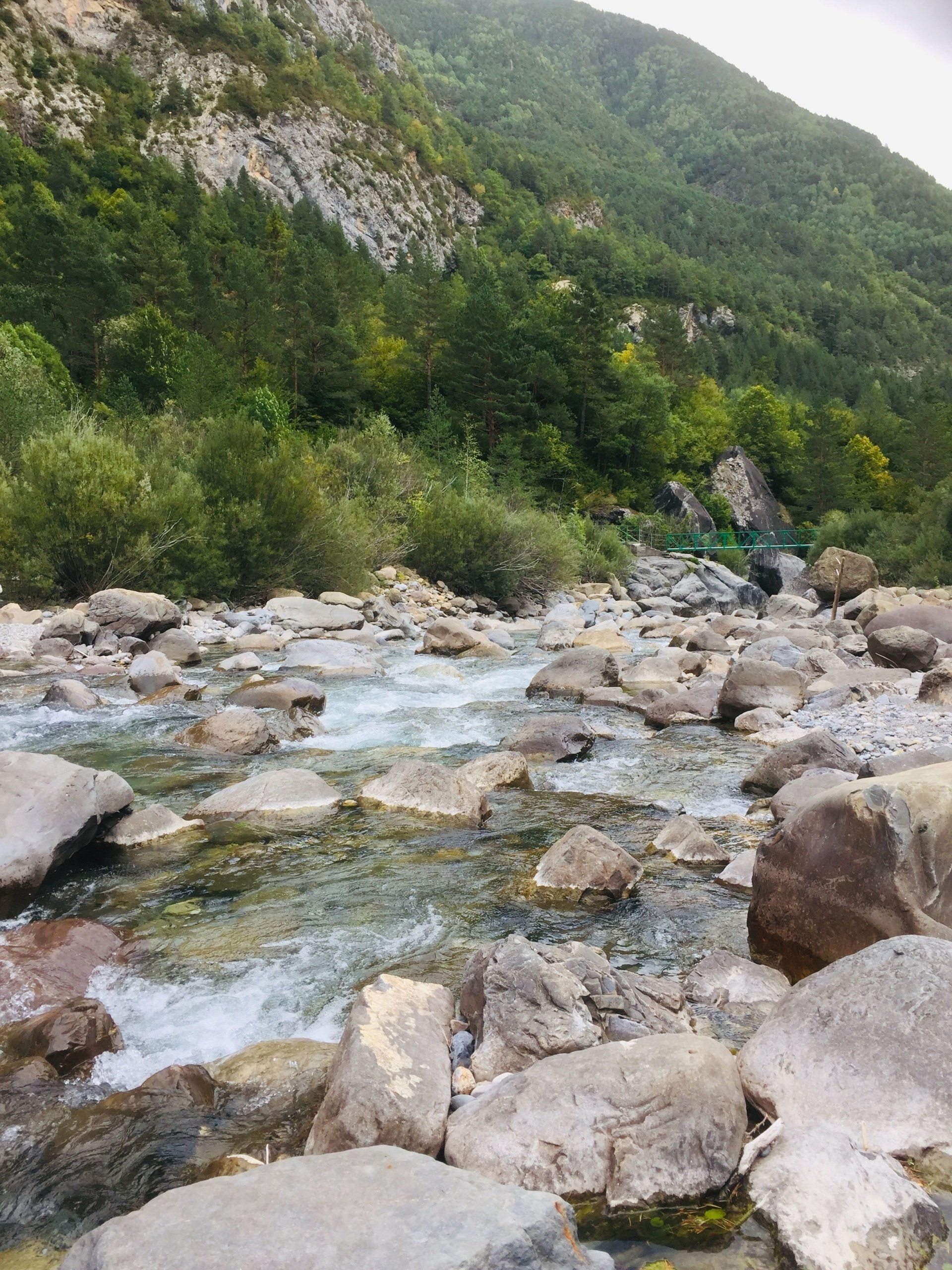The Rio Ara
The only river in Northern Spain free of any dam
It is an absolutely exceptional river, both in terms of fishing pleasure, but also by the beauty of the landscapes around it. It's coming from high in the Pyrenees, and its upper part, in the Torla area, is simply breathtaking, and... loaded with trout that love to rise ! Most of the Ara's cotos are "in muerte" ( on a catch and release basis). The Ara's zebra trout are very unpredictable, sometimes the river seems empty of any life, and the moment after, trout are everywhere. The Ara can produce significant hatches, and the trout also love to rise when you are just "fishing the water". It is also perfect for Euro nymphing maniacs, as it flows relatively fast, with many streams and rocks.
Trophy fish are always possible everywhere on the Ara, and particularly in the canyon of Boltana. And let us not forget that this river flows in a valley full of stories and mysteries .....!
A bit of geography
The Ara rises in the valley of Bujaruelo, on the flanks of the Vignemale mountains, on the South slope of the Pyrenees, to reach 70 km further the Cinca near the town of Aínsa-Sobrarbe, with a difference in altitude of 2 092 m (from 2 620m down to 528 m), with an average slope of 3%.
The Ara is the only river of any importance, in Spain, which has not been disturbed or modified by man throughout the 70 km of its course.
Its main tributaries are the Otal, Arazas (Ordesa Valley), Sorrosal, Chate, Forcos, Guargas, Sieste and Ena rivers.
The Ara Valley, like the Rio Gallego, is a good example of a glacial valley on its first half, although it has been greatly eroded by water flows since the disappearance of glaciers.
Its basin is part of that of the Cinca, itself included in that of the Segre, and finally of the Ebro, hence the presence of zebra trout, even though it is quite far away from the Mediterranean sea.
The Rio Ara is a very whimsical and magical river. Due to the purity of its water and very little farming or industry on its banks, it's also very rich in all sorts of insects, and therefore in beautiful,sometimes large, native trout. In this river, do not expect to catch a hundred fish a day, but the ones you will catch will remain in your memory for ever !
There are several, very different parts between its source and its confluence with the Rio Cinca in Ainsa, but overall the upper part bordering the Ordesa National Park is typically a mountain stream. The shape of the Ara changes completely starting from the village of Broto, to become a much wider river with fast and quieter parts. Finally, its last stretch, after the village of Janovas and the city of Boltana toward Ainsa is really a quite shallow plain river, but still very rich in trout.



